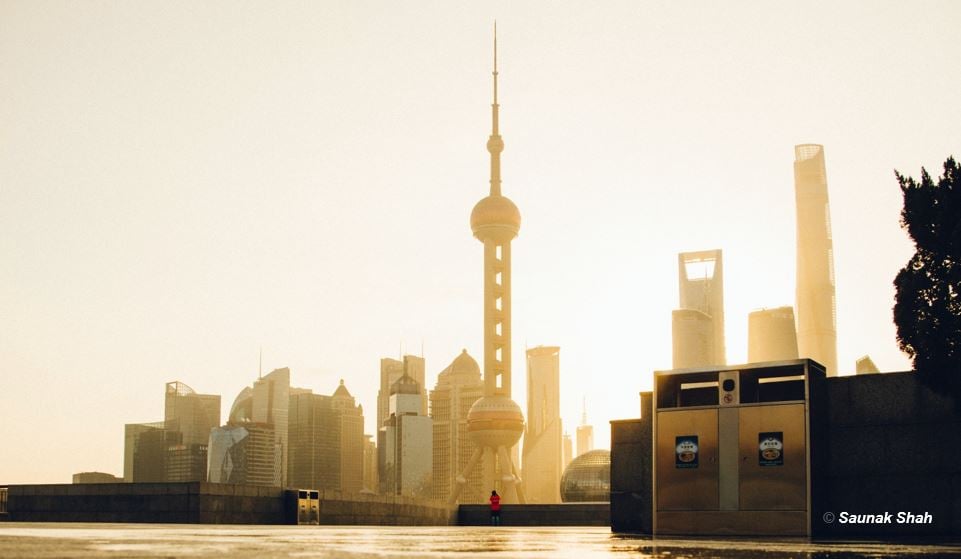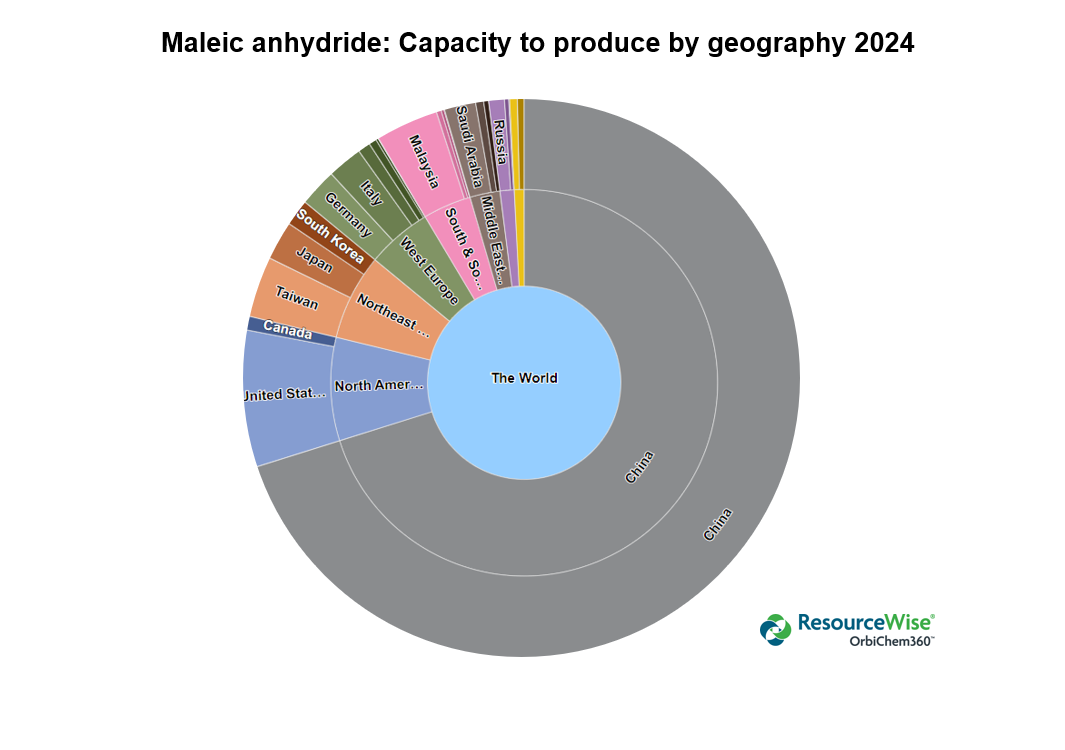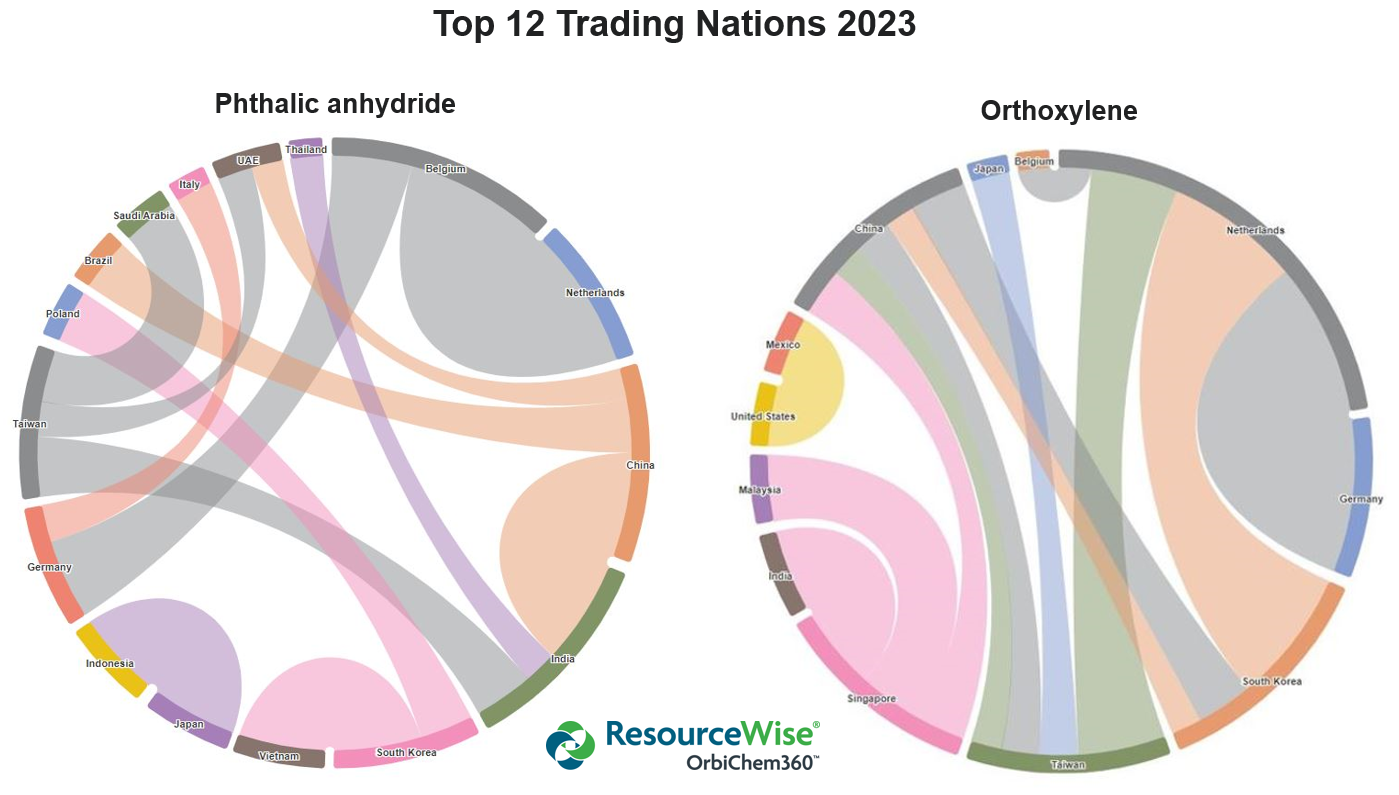Earlier this month, we explored how chemical value chains are shifting, adapting and evolving to navigate geopolitical, societal and world welfare issues.
Our blog post Retreat of Western investment in – and reliance on – China considered the views of key brand representatives on the issue and Davos thinking alongside the insights of our own consultants.
Today, we are flipping the coin to present the thinking of our colleagues and industry partners within the Asia region.
ANALYSIS BY GRACE SHEN, TECNON ORBICHEM'S CHINA-BASED ORTHOXYLENE, PHTHALIC ANHYDRIDE, UPR & AROMATICS EXPERT
From an aromatics import/export perspective, globalisation strategy seems to be making a comeback. 'Trading volumes apparently increased in the second quarter of 2022,' says senior consultant Grace Shen.
Aromatics, including toluene, mixed xylenes, benzene and styrene are being actively exported from Asia to the US and Europe,’ adds Shen.
 The western region’s shortages have been caused by production disruptions since the Covid-19 outbreak and global supply chain disorders, and more recently, the Russia-Ukraine war issues, all clashing with currently fast recovering demand on easing of Covid restrictions and lockdown measures.
The western region’s shortages have been caused by production disruptions since the Covid-19 outbreak and global supply chain disorders, and more recently, the Russia-Ukraine war issues, all clashing with currently fast recovering demand on easing of Covid restrictions and lockdown measures.
Yet, there are questions, one is how long the high demand for gasoline and gasoline blenders in the US could last. Market participants are already worrying about the demand when US’s peak driving season ends after September.
The other big question is how end-users and consumers could handle spiked prices with inflation hitting decades-highs. Further, market participants are worrying that interest rate hikes by major central banks for curbing runaway inflation, could slow the global economy and cut demand for energy.
'...China’s significance regarding chemical intermediates seems to be maintainable for the foreseeable future...'
Grace Shen, Tecnon OrbiChem senior consultant
Already, crude oil prices have tumbled on news of the Fed’s rate hikes, and aromatics prices have also seen some retreats entering the second half of June. With those questions in mind, it is hard to tell at this stage whether globalisation is being, or will be, recovered, even in the perspective of aromatics markets only.
Bounce back bumpy
As far as China’s attractiveness for foreign investments is concerned, it seems difficult to reach a conclusion that it is waning or not. Admittedly, China’s Covid-zero policy and resulting containment measures have depressed economic growth in the second quarter of this year. It is an open question what China’s economy performance could have been like if Covid-coexistence policy had been taken as seen in some other countries, and many comments are heard that the situation could be much worse if the Covid outbreak had spread more widely.
With the Covid situation in Shanghai brought under control since June, active stimulus measures and policies are already on the way for supporting a wide range of sectors. However, the recovery road is likely to be gradual and bumpy, rather than a V-shape rebound, against a backdrop of a slowing global growth.
Looking more closely at the chemical sector, China’s significance regarding chemical intermediates seems to be maintainable for the foreseeable future. There has not been much in the way of big-scale investments on chemical intermediates capacity outside China, especially in Europe and the US. Even in Asia, despite some new investments, some old capacities (refinery/aromatics, caprolactam, styrene, etc.) are idling or closing due to intensified competition and squeezed margins. New capacities are coming onstream in China, and mostly with domestic capital investments, not so much reliance on foreign investments.
As for end-user sectors, however, demand is really under pressure due to worldwide rising inflation. Before the pandemic, there was already a trend of moving manufacturing capacities, such as apparel, shoe, furniture, and others, out of China to South and Southeast Asia, due to China’s rising labour cost, stricter environmental protection requirements, and rising barriers for Chinese-origin goods being exported to countries like the US. The trend will continue, with investors in search of high margins and market access availability. Also, in a sense, it is a path of industrial upgrading for China, with human resource migrating to more advanced industries and service sectors.
After all, we still need to wait and see what trends around foreign investments in China will develop. However, in terms of chemical intermediates, it seems sure that more Chinese manufacturers intend to seek and develop exporting opportunities and channels to pursue better margins, and release oversupply pressure.
Chlorine & vinyls
China is the largest country in the world producing chlor-alkali and PVC. Its chlorine output accounted for around 45% of the global capacity in 2021 – with a similar figure for its PVC production capacity. Chlorine and vinyls capacity is expected to continue rising in with capacity expansions already planned and underway.
Additionally, China’s EDC and PVC import volume dropped substantially in 2021 and 2022 compared to 2020. The country exported significantly more EDC and PVC in 2021 and 2022 than in 2020 due to tight supply and higher EDC and PVC prices outside China.
A major PVC trader based in south China rejected the claim that the country relies on western investment. ‘I did not see any retreat of western investment in China’s PVC and chlorine productions, although it looks there is retreat trend for some other chemicals,’ the source said.
Another PVC seller from east China complained of weak domestic demand for PVC. ‘It was reported that the productions of some finished PVC products, for example PVC shoes and floor, have been transferred to Southeast Asian countries amid lower labour costs,’ the source told Tecnon OrbiChem.
Analysis by Lulu Zhao, Tecnon OrbiChem’s China-based caustic soda, acetic acid/acetyls expert
A major acetic acid producer based in eastern China said the influence of western investment in China’s acetic acid market is relatively small.
‘Celanese and BP have acetic acid plants in Nanjing. These western companies are unlikely to shut down their well-run plants and withdraw from the Chinese market.

‘Production output of Chinese acetic acid is quite stable and sufficient now and a large portion of output comes from Chinese local acetic acid producers,’ our source added.
The retreat of western investment in China has not affected the acetic acid and caustic soda industry noticeably. Production capacity for those chemicals within China is already quite large and most plants are owned by Chinese chemical corporations.
Western capital involved in Chinese acetic acid and caustic soda industry is relatively low, with production capacities in China being sufficient to meet demand. Overall, China’s acetic acid and caustic soda industry has little demand for western investment.
In terms of industrial transfer, some labour-intensive businesses – such as garments – are being transferred from China to south and southeast Asia. The textiles sector is a major downstream industry for caustic soda. However, a caustic soda-focused source said garment orders from the US and Europe are returning to China because of its complete garment industry supply. Garment factories in south and southeast Asia need to import raw materials such as fabric and textile from China, which due to Covid-19-related issues, is becoming increasingly problematic.
Diversifying supply chains
Energy consumption restrictions, Covid-19 lockdowns and trade disruptions in China throughout H2 2021 and to mid-2022 put pressure on South Korean PBT compounders, says Tecnon OrbiChem’s polyester fibre & resins senior consultant Hyun-Min Kim.
Buyers were forced to diversify their supply chains, and they attempted to rely on China less and less due to the vulnerabilities of reliance on China materials, Kim adds.
‘As there has been the uncertainty in the market due to an external factor, South Korean customers tended to purchase raw material more frequently from China building up enough raw material stocks. However, since China’s base polymer PBT has strong price competitiveness, it is difficult for overseas compounders to ingnore.
ANALYSIS BY TERRY LI TECNON ORBICHEM’S CHINA-BASED EG, EO & DERIVATIVES, OLEFINS & POLYOLEFINS EXPERT
Onshoring and supply chain deglobalisation trends are currently impacting manufacturing industry – downstream of petrochemicals – but not significantly impacting the petrochemicals sector.
 One Thailand-based source told me his US client sought finished product suppliers in Southeast Asian countries during the lockdown in Shanghai. Post Shanghai-lockdown, the downstream industry is anticipating recovery. On the whole, China’s stocks index have rebounded to pre-lockdown levels.
One Thailand-based source told me his US client sought finished product suppliers in Southeast Asian countries during the lockdown in Shanghai. Post Shanghai-lockdown, the downstream industry is anticipating recovery. On the whole, China’s stocks index have rebounded to pre-lockdown levels.
China is a net importer of polyolefins for which there is no significant impact. There is ready availability of containers in sources’ ports, since China exports a lot of finished or semi-finished products by container to ports around the world. For bulk shipping, there is no impact.
In acrylic acid and acrylates, China does export - but mainly by bulk – and no impact has been seen there by my sources.
Senior Consultant Michelle Yang – Tecnon OrbiChem consultant, acetyls, paraxylene & PTA – saw the impact of Shanghai lockdown swiftly fade in June. ‘But the weak market demand for many petrochemicals including PTA and PA 66 downstream continues.
'Shanghai logistics have almost recovered but not fully, largely due to stringent ongoing quarantine rules for drivers that test positive. Examples of governmental economic stimulus include a 50% cut in purchase tax for eligible vehicles to boost the auto industry. It is estimated that two million more vehicles are expected to be sold this year than the previous estimate.'
ANALYSIS BY JOYCE CHEN, TECNON ORBICHEM’S PA 6 & INTERMEDIATES, METHANOL & POLYACETAL EXPERT
 Some clothes orders were going to Southeast Asia, one filament producer said. ‘Since clothes orders are related to seasons, loss of the summer season orders means waiting until Autumn. It is a difficult time for many clothes-related producers. There is hope orders will come back this Autumn.’
Some clothes orders were going to Southeast Asia, one filament producer said. ‘Since clothes orders are related to seasons, loss of the summer season orders means waiting until Autumn. It is a difficult time for many clothes-related producers. There is hope orders will come back this Autumn.’
A PA 6 polymer producer said that his company has focused more on the export markets. ‘Domestic demand is not recovering as fast as expected. Because of the big cost pressure, some polymer producers in Asia have decreased the operating rate this year, which is a good chance for Chinese polymer producers to export. However, it is not easy because the demand in Asia is also not good.
‘We have to keep our price very competitive in the overseas market. The lockdown of some major cities did influence some producers’ operating rate to some extent, but because of the cost advantage, export volume has increased a great deal compared to last year.
ANALYSIS BY SHIRLEY ZHAO, TECNON ORBICHEM’S CHINA-BASED MALEIC ANHYDRIDE, ACRYLONITRILE & DERIVATIVES EXPERT
China is the biggest workshop of the world. With rising labour costs in China, some labour-intensive industries moved to low labour cost countries such as Vietnam several years ago. However, raw materials and components are imported from China.
The rush of companies investing overseas caused the increase of local labour costs. Some investors realised overall costs were almost same as in China but they soon realised that they needed to factor in increased risk – such as freight costs, delivery time, language barrier and local policies.
As a result, some companies stopped the transfer. It is difficult to move a whole industry to other countries. An advantage of China is that it has the entire mature supply and production chain.
Producers are local Chinese companies. More new capacities will come onstream in the coming years and those projects are invested in by local companies. Most of them are integrated with upstream and downstream products.
This blog post was created to give Chinese companies the opportunity to join the debate raised by our recent white paper Retreat of Western investment in - and reliance on - China, a shifting, adapting, evolving chemical value chain. The full white paper (which includes trade data for Q1 2021 and 2022) can be downloaded by filling the form below.




 The western region’s shortages have been caused by production disruptions since the Covid-19 outbreak and global supply chain disorders, and more recently, the Russia-Ukraine war issues, all clashing with currently fast recovering demand on e
The western region’s shortages have been caused by production disruptions since the Covid-19 outbreak and global supply chain disorders, and more recently, the Russia-Ukraine war issues, all clashing with currently fast recovering demand on e
 One Thailand-based source told me his US client sought finished product suppliers in Southeast Asian countries during the lockdown in Shanghai. Post Shanghai-lockdown, the downstream industry is anticipating recovery. O
One Thailand-based source told me his US client sought finished product suppliers in Southeast Asian countries during the lockdown in Shanghai. Post Shanghai-lockdown, the downstream industry is anticipating recovery. O Some clothes orders were going to Southeast Asia, one filament producer said. ‘Since clothes orders are related t
Some clothes orders were going to Southeast Asia, one filament producer said. ‘Since clothes orders are related t


